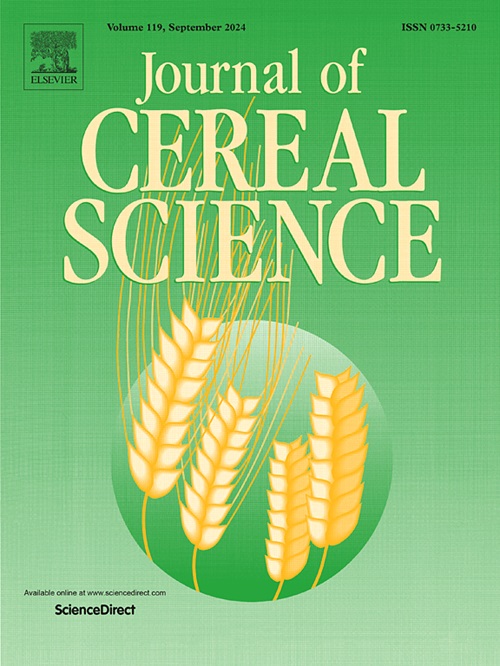Impact of storage of oat bran flour and dispersion on lipid oxidation, odour profile, and oxidative degradation of beta-glucan
IF 3.7
2区 农林科学
Q2 FOOD SCIENCE & TECHNOLOGY
引用次数: 0
Abstract
Lipid oxidation induced oxidative degradation of beta-glucan could lead to technological, sensory, and nutritional challenges during food storage. This study aimed to explore the impact of storage of oat bran concentrate (OBC) flours and aqueous oat dispersions on lipid, beta-glucan, and odour properties. Formation of free fatty acids was observed in non-heat treated OBC flour during storage (12 weeks at 4–40 °C), indicating the activity of endogenous hydrolytic enzymes, while lipid oxidation was highest in heat-treated (HT) OBC flour. The molecular weight of beta-glucan remained the same, indicating that lipid oxidation did not induce oxidative degradation of beta-glucan in the flours. Fresh and 8 weeks at 40 °C stored HT OBC flours were used for the preparation of aqueous oat dispersions with and without 3 % rapeseed oil. No difference in the odour characteristics of dispersions prepared from fresh and stored OBC flours was found. However, 4 weeks at 22 °C storage of HT OBC dispersions had a significant effect on the odour in comparison to the freshly prepared dispersions. During the storage of the dispersions, oxidation of lipids was mild and degradation of beta-glucan was not detected. This study provides new insights into the impact of storage on dry and aqueous oat products.
燕麦麸皮粉的储存和分散对脂质氧化、气味特征和β -葡聚糖氧化降解的影响
脂质氧化诱导β -葡聚糖的氧化降解可能导致食品储存过程中技术、感官和营养方面的挑战。本研究旨在探讨燕麦麸皮浓缩(OBC)面粉和燕麦水分散体的储存对脂质、β -葡聚糖和气味特性的影响。未经热处理的OBC面粉在4-40℃条件下储存12周,发现游离脂肪酸的形成,表明内源水解酶的活性,而热处理的OBC面粉的脂质氧化最高。β -葡聚糖的分子量保持不变,表明脂质氧化没有引起面粉中β -葡聚糖的氧化降解。使用新鲜和在40°C下保存8周的高温贮藏面粉制备含3%菜籽油和不含3%菜籽油的燕麦水分散体。从新鲜和储存的OBC面粉制备的分散体的气味特征没有差异。然而,与新鲜制备的分散体相比,在22°C下储存4周的HT OBC分散体对气味有显著影响。在分散体的储存过程中,脂质氧化轻微,未检测到β -葡聚糖的降解。这项研究为干燥和含水燕麦产品的储存提供了新的见解。
本文章由计算机程序翻译,如有差异,请以英文原文为准。
求助全文
约1分钟内获得全文
求助全文
来源期刊

Journal of Cereal Science
工程技术-食品科技
CiteScore
7.80
自引率
2.60%
发文量
163
审稿时长
38 days
期刊介绍:
The Journal of Cereal Science was established in 1983 to provide an International forum for the publication of original research papers of high standing covering all aspects of cereal science related to the functional and nutritional quality of cereal grains (true cereals - members of the Poaceae family and starchy pseudocereals - members of the Amaranthaceae, Chenopodiaceae and Polygonaceae families) and their products, in relation to the cereals used. The journal also publishes concise and critical review articles appraising the status and future directions of specific areas of cereal science and short communications that present news of important advances in research. The journal aims at topicality and at providing comprehensive coverage of progress in the field.
 求助内容:
求助内容: 应助结果提醒方式:
应助结果提醒方式:


